Summary of key points
- Web3 is still struggling to achieve mass adoption. Meme coins have proven to be interesting enough to attract public attention, but the speculation-driven craze quickly fades.
- Casual games are an effective carrier for the popularization of new technologies. Gomble Games seamlessly integrates Web3 functions into gameplay and quickly acquires customers through simple games such as Eggdrop.
- A complete ecosystem including GOMBLE SQUAD, GOMBLE BUILDERS and token reward system has been built to provide economic incentives for Web3 users and create a zero-technical threshold entry for Web2 users.
1. The road to popularization of Web3: a long and difficult one
Mass adoption has always been the core goal of the Web3 industry, but substantial user growth has not yet emerged. Technological advances such as account abstraction and transaction speed-up have lowered some barriers, but have failed to significantly increase the number of active users.
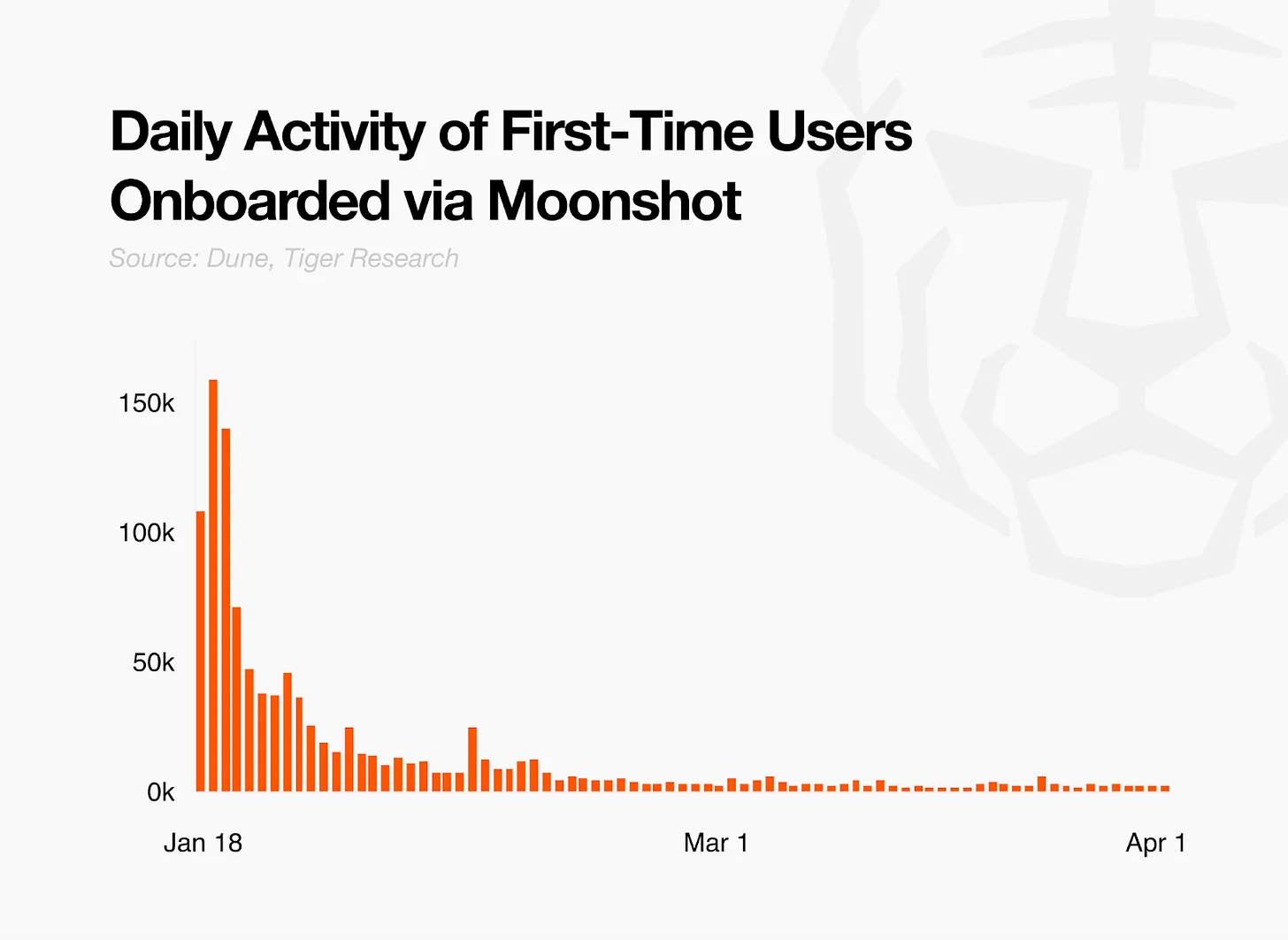
The recent meme coin craze represented by Chillguy and Trump briefly activated public interest, but the on-chain data platform Moonshot shows that most $Trump investors suffered losses and exited shortly after their initial purchases - either passively holding or leaving the ecosystem completely. This pattern of speculative entry and rapid exit contributes little to long-term growth and may even damage public perception.
To achieve true Web3 adoption, the industry’s focus must shift to users’ continued perception of value — going beyond short-term financial gains and building a stable, engaged user base.
2. Casual games: a bridge for popularizing new technologies
Games have always been a pioneer in popularizing new technologies. In the PC era, MUD games guided users to adapt to unfamiliar interfaces and network environments through interesting gameplay.

Source: Fruit Ninja, Temple Run, Angry Birds
In the era of smartphones, intuitive casual games such as Fruit Ninja, Temple Run, and Angry Birds have attracted a wider and more diverse user base than MUD games in the PC era. These games have become key catalysts for the diffusion of technology, guiding users to experience mobile features such as touch screens and gyroscopes without complicated instructions, and achieving technology acceptance through pleasant experiences.

Source: Pokémon Go
Augmented reality technology follows a similar path. Pokémon Go allows players to interact with digital characters in real-life scenarios, bringing AR into daily life without having to understand the underlying technology. Casual games, as “experience tutorials” for new technologies , have always been an effective tool for driving mass adoption by simplifying complex systems and providing intuitive value.
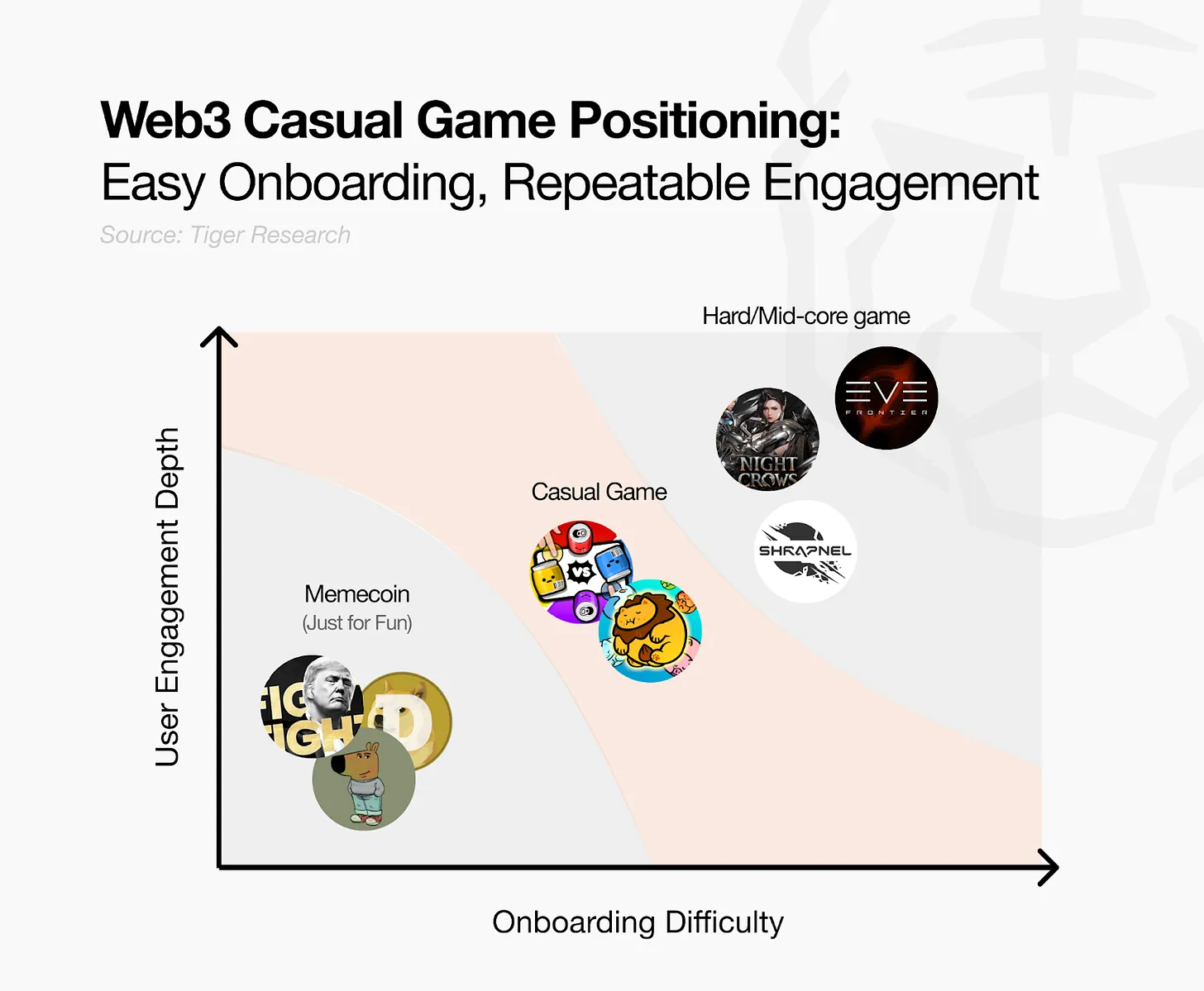
The same principle applies to Web3. Casual games provide a low-friction entry point to the ecosystem. Their short duration and simple mechanics allow users to explore Web3 with minimal risk. Meme coin transactions are similarly easy to use, but driven by speculation, with participants seeking quick profits and then exiting quickly. On the other hand, hardcore Web3 games have technical depth and rich content, but their complex entry process and long gameplay limit their mass appeal.
Casual games fill the middle ground, combining accessibility with sustained engagement, becoming a pragmatic path to large-scale adoption of Web3.
3. Gomble Games: Delivering Web3 fun with casual games
Gomble Games (GOMBLE) is leading the integration of Web3 and casual games. The company originated from the blockchain department of the Korean game studio 111 Percent, which has launched global hits such as "Random Dice" and "Lucky Defense". Based on this foundation, GOMBLE is committed to promoting the adoption of Web3 through accessible and highly engaging gaming experiences.
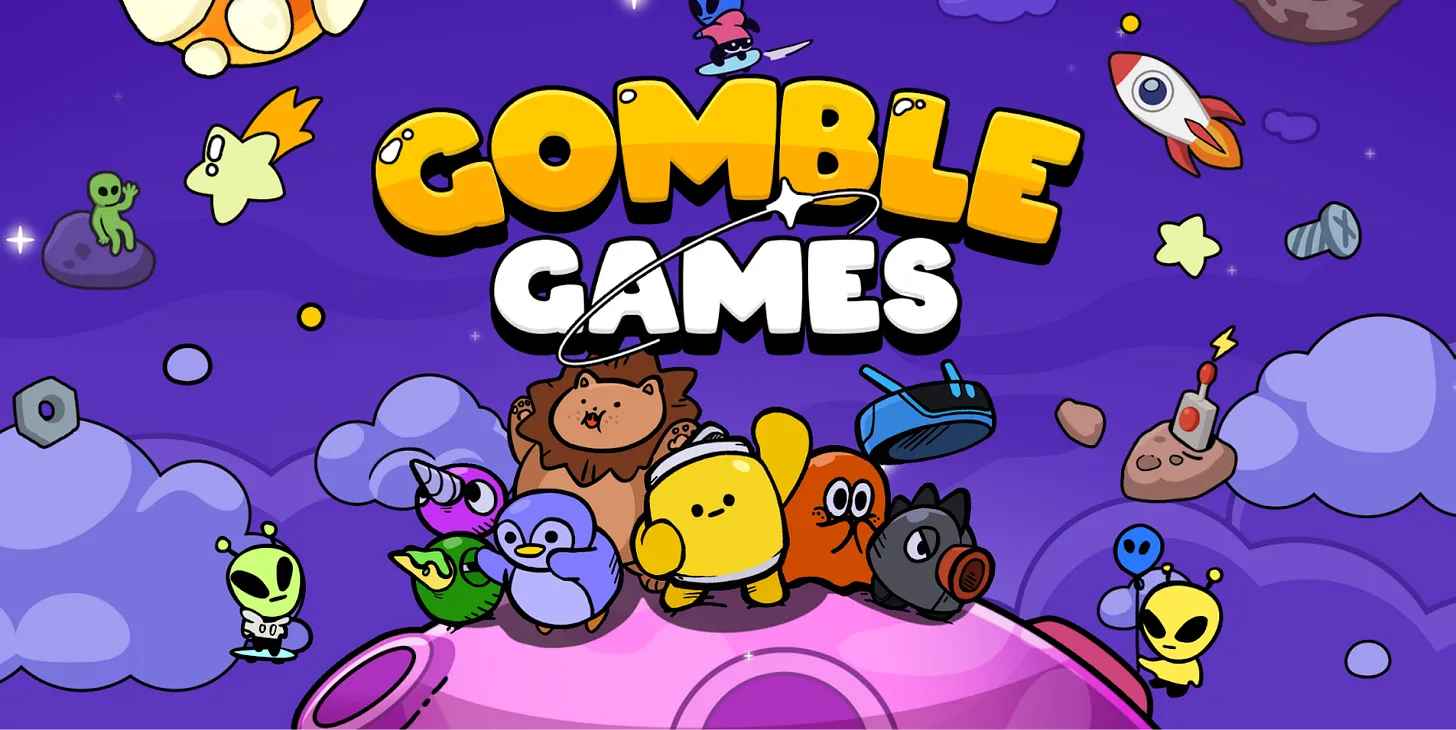
Source: Gomble Games
GOMBLE adheres to the core principle: delivering fun. Web3 features are integrated into the gameplay in a way that does not interfere with the gaming experience, and this strategy has received strong support from the market. In 2024, GOMBLE completed over $10 million in financing from YZi Labs (formerly Binance Labs), Spartan, Hashed and other institutions.
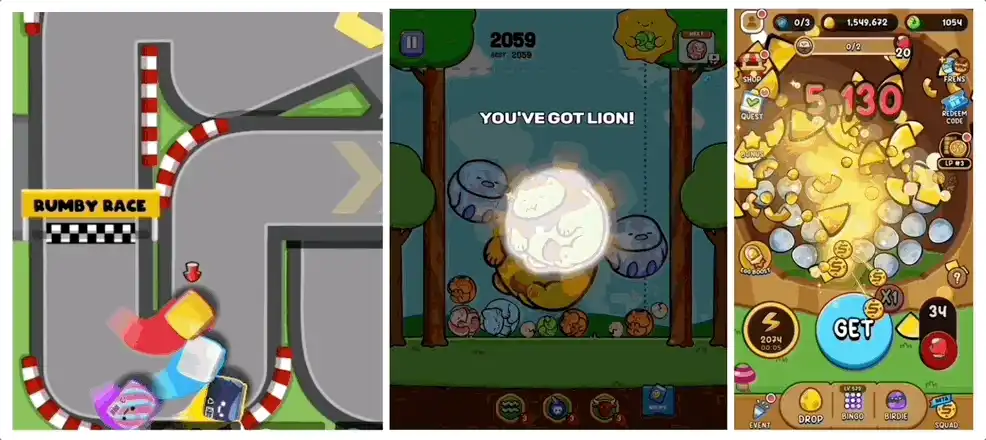
Source: Gomble Games
GOMBLE has proven its execution capabilities: it launched casual games such as "Merge Lion" and "Rumby Party" in 2024. Its Telegram platform game Eggdrop attracted 300,000 users within two days of its launch, and its monthly active users quickly exceeded 3 million, with daily active users reaching 600,000 and maintaining a high retention rate. Players highly praised the game quality and comprehensive experience of Eggdrop, showing outstanding gameplay and participation advantages in Telegram games. Through Eggdrop, GOMBLE has proved its ability to design high-performance and high-stickiness games in the Web3 ecosystem.
4. Gomble’s advanced strategy: from game development to ecosystem construction
GOMBLE is going beyond game development to build a complete Web3 ecosystem. Its strategy achieves long-term engagement through an architecture that connects users, developers, and content holders. The key is to understand the advantages and limitations of casual games - although the entry barrier is lowered, it often faces the challenges of short life cycle and high user churn rate. GOMBLE uses Web3 technology to create value outside of games and transform short-term gaming behaviors into long-term relationships.
This model is like designing a theater backstage system and managing a troupe to ensure the continuous production of successful plays. To achieve its vision, the company operates: 1) GOMBLE SQUAD, a social gaming center; 2) GOMBLE BUILDERS, a developer platform; and 3) the native token $GM. The three work together to build a sustainable Web3 ecosystem and realize the vision of users co-creating content and sharing rewards.
4.1 Social Game Center: GOMBLE SQUAD

Source: GOMBLE SQUAD
This module introduces a team mechanism of up to 10 people, and strengthens social attributes through collaborative tasks, team rankings and reward sharing. Analogous to team sports, it transforms individual games into collective achievements and increases participation time by rewarding collective participation.
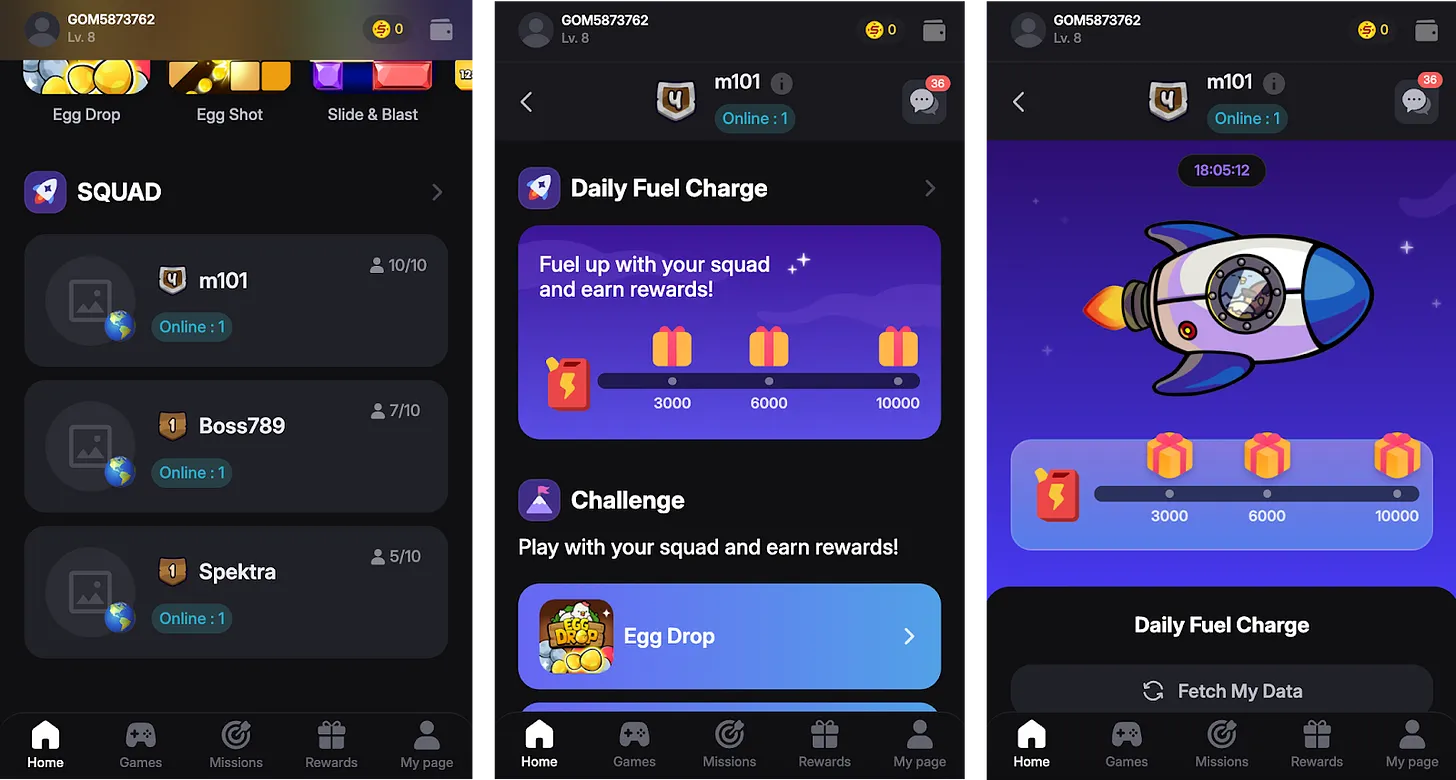
GOMBLE SQUAD interface based on Telegram, source: Gomble Games
During the testing phase, the Telegram version of GOMBLE SQUAD showed strong appeal: users formed nearly 50,000 teams and generated more than 560,000 interactions. After applying team tasks in Eggdrop, the daily retention rate based on one week of data increased by an average of 7%, and competitive elements such as leaderboards increased the average spending of paying users by about 6.7 times.
GOMBLE achieves on-chain expansion through the "Proof of Squad (PoSQ)" mechanism. Unlike traditional Web3 that emphasizes individual transactions or asset holdings, PoSQ, as a new type of social data record, verifies team interactions, allowing developers to obtain socially driven user data, players can verify team-level contributions, and support transparent reward distribution based on collective performance.
GOMBLE plans to expand the system through native mobile applications, extending from game mechanics to a rewards center that connects digital and real-world activities. Although specific features have not yet been revealed, the collaborative architecture has opened up new possibilities - such as "squad marathons" that integrate members' steps, or location-based team check-in challenges.
Through this model, GOMBLE aims to create an intuitive entry point for Web3 native users and the general public, driving large-scale adoption with a low-friction mechanism.
4.2 User-driven development platform: GOMBLE BUILDERS
The platform allows users to directly participate in game development and obtain rewards. It is designed specifically for casual games with short development cycles and simple mechanisms, and is suitable for community-driven iterative experiments.
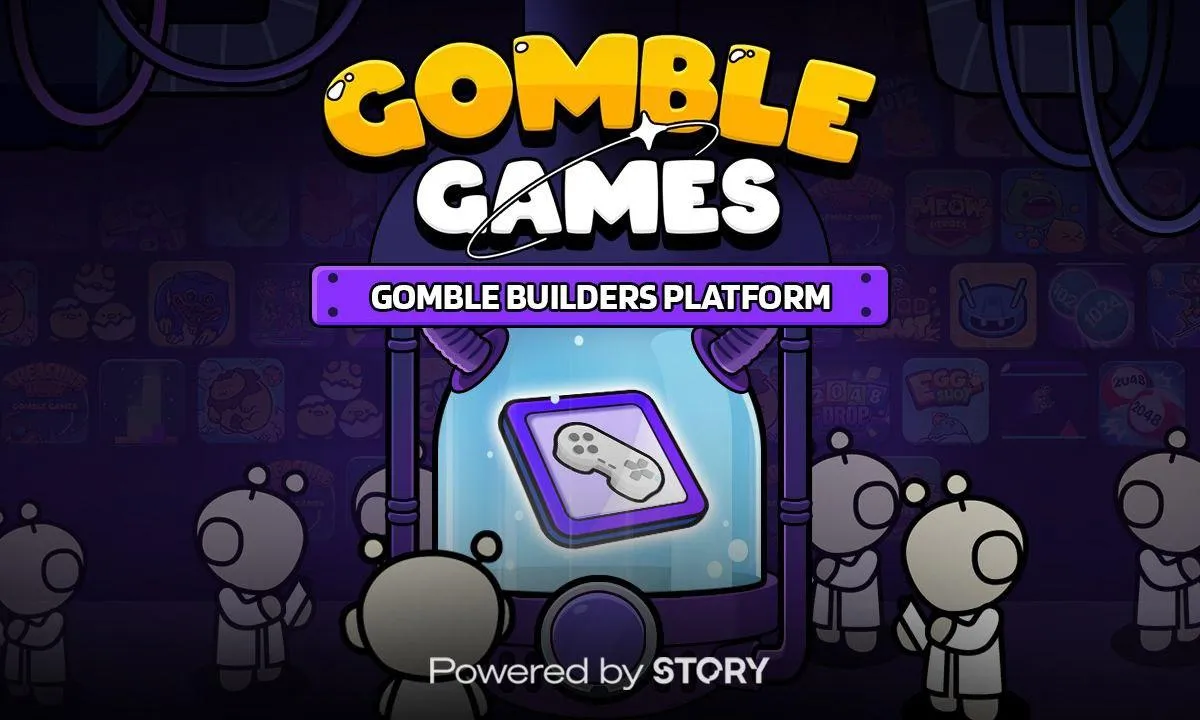
Source: Gomble Games
Based on its experience in casual game development, GOMBLE has built a system where user feedback directly affects game design. The first phase of the trial will introduce IP content selected by community voting, and has reached cooperation with the blockchain IP protocol Story.
For example, Pudgy Penguin NFT holders can propose character skin IPs. After the community votes, GOMBLE will make visual adaptations and add them as game assets. The revenue from paid content is shared with NFT holders, and both the proposer and the voting user will receive rewards.
GOMBLE plans to expand the Builders feature, and future updates will introduce tools that support users to participate in game creation and monetization. By opening up development to the community, GOMBLE aims to extend the life cycle of casual games while increasing the creative diversity of the category.
4.3 Incentive-driven flywheel: GOMBLE token economy
Rewards are not the end of the user journey, but the beginning. Rewards stimulate initial participation and convert into continued activity and contribution. Blockchain technology makes this model more reliable and measurable - transparent records verify every action.
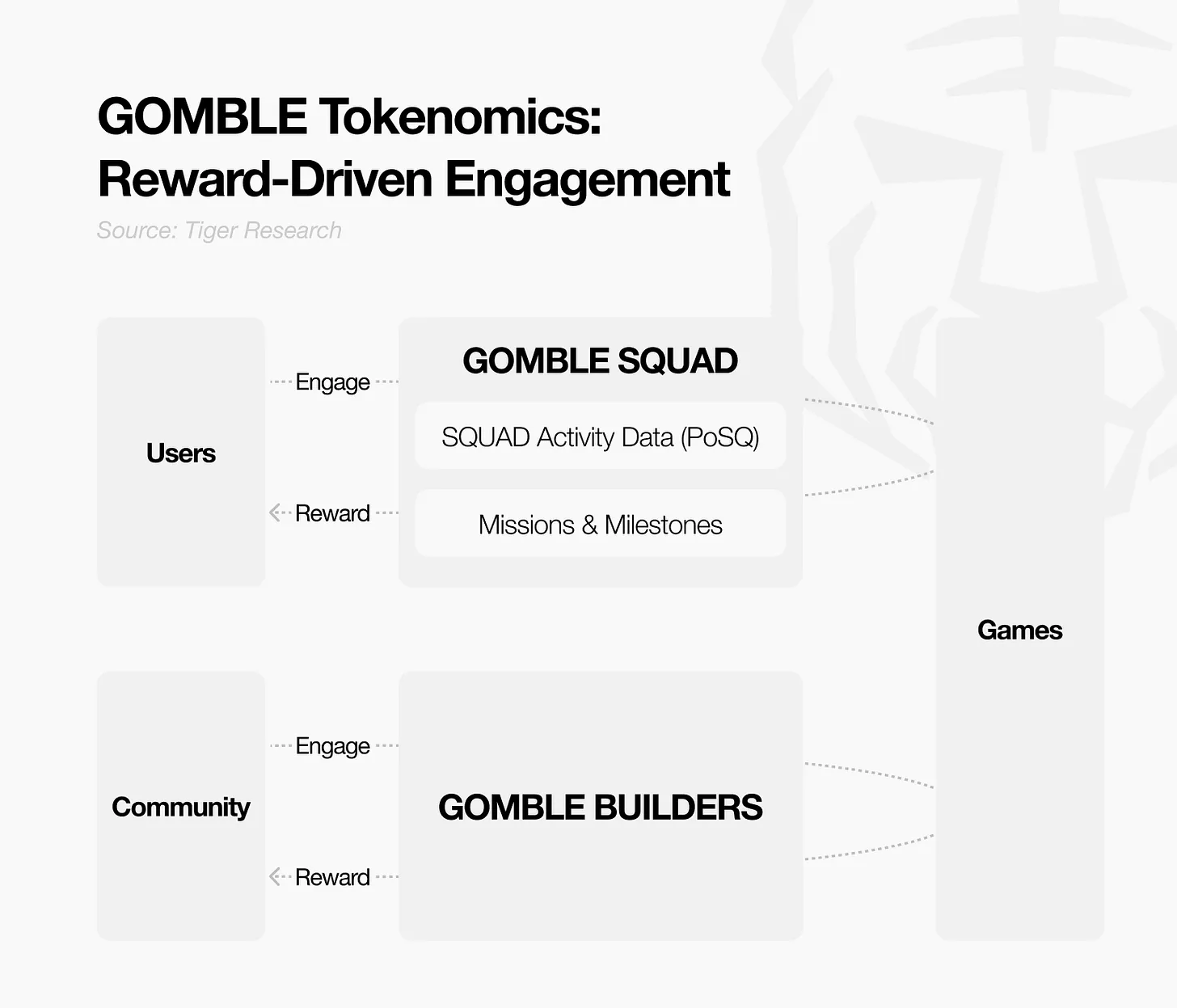
GOMBLE designs a token economy that connects players, developers, and communities: players earn tokens through games, and on-chain records generate high-quality user data; developers use this to accurately locate users, optimize operations, and deliver personalized rewards. This feedback loop is not feasible in traditional games - data is fragmented by platforms such as Google and Facebook, resulting in limited developer insights and rising marketing costs. GOMBLE subverts this model, returning data ownership to developers and users, and transforming it into a shared asset that drives participation.
GOMBLE also rewards community contributions. In traditional ecosystems, players who provide feedback receive little reward, while the platform monopolizes the value. GOMBLE changes this dynamic by directly rewarding contributors with tokens, establishing a clearly aligned incentive and sustainable participation structure. This model inherits the precedents of the StarCraft map editor and Steam Workshop, but achieves transparency, ownership, and structural upgrades through Web3. GOMBLE not only invites users to play, but also invites them to build an ecosystem and share value.
5. Gomble’s challenges and potential for adoption
In the early days of smartphones, casual games helped the public get familiar with mobile technology. Their simple and intuitive gameplay reduced the learning curve and accelerated the development of the application ecosystem. GOMBLE is now committed to replicating this path in the Web3 field.
The team has proven its execution in the casual game field: during LaunchPool, it attracted more than 2 million new users through the Telegram team in two weeks. However, initial results are not enough to guarantee success, and the continuous output of "interesting games" is the key to success. The parent studio 111 Percent has achieved qualitative changes through popular games such as "Random Dice", and GOMBLE also needs phenomenal games to support its token economic architecture.
Unlike the traditional model that relies on a single product, GOMBLE, as an ecosystem builder, collaborates with external developers, studios, and Web3 projects to expand its influence and increase the probability of success. This collaborative strategy strengthens long-term prospects.
Casual games are still the most pragmatic tool for achieving large-scale adoption of Web3. History has proven that games bring new technologies to mainstream users through intuitive experiences. GOMBLE now stands at the intersection of games and Web3 - if it succeeds, it may usher in a new wave of popularity driven by game fun rather than speculation.

















